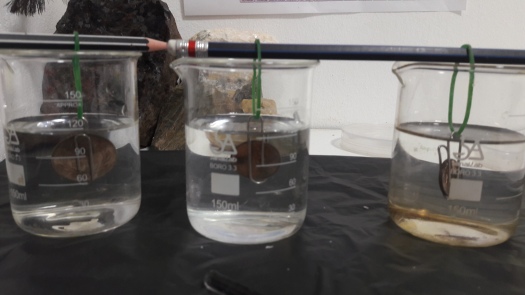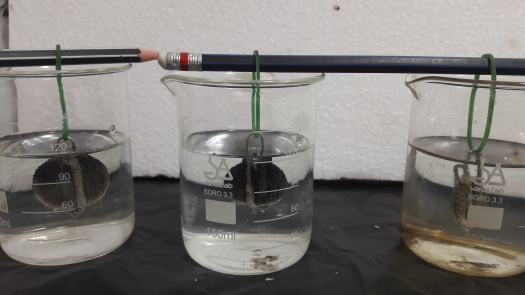The Silver Coin
What about this experiment? Remember the silver tree? That was a great experiment. Go over there and check it out (here: https://danupondrake.wordpress.com/2017/06/25/the-silver-tree/). The silver nitrate will stick to the copper coil and make crystals. But instead of copper coils, why don’t we try copper coins? It will be fun to try! Let’s get started then!
Let’s some coins from different countries.
Penny (19 mm diameter): The alloy remained 95 percent copper and 5 percent zinc until 1982, when the composition was changed to 97.5 percent zinc and 2.5 percent copper (copper-plated zinc) until now. Cents of both compositions appeared in that year.
50 Satang (Thai baht) (18 mm diameter): The core is 99% iron and cladding is 99% Copper.
10 Yen (Japanese Yen) (23.5 mm diameter): 95% copper, 3–4% zinc, and 1–2% tin.
To hang the coins in the beaker, I used paper clips to hold the coins…
…And tie rubber bands at each paper clips.
I made the solution for the experiment and dipped the coins in there…
Now I just have to wait.

30 Minutes later:

The coins are just turning blacker. So I took the coins out and cleaned them.

The coins look different. The penny turn yellow-orange, the Satang turned darker, and the Yen turned yellow.
But I wonder why…
Maybe bec
Hope you enjoyed this post, if you did, tell me in the comment section ↓
Sources:
www.livescience.com/32401-whats-a-penny-made-of.html